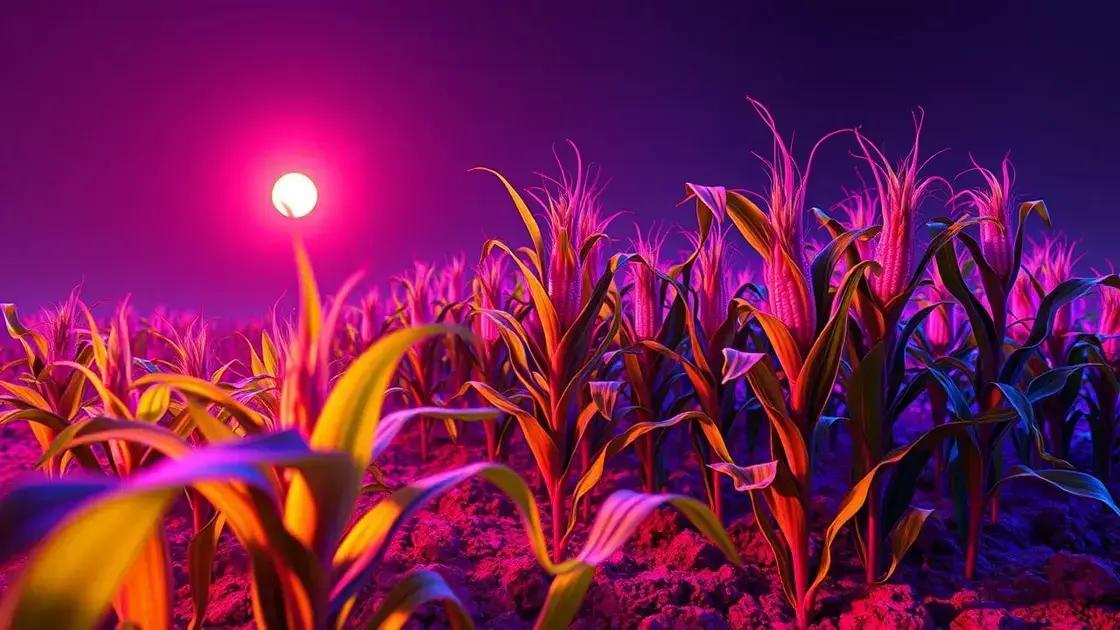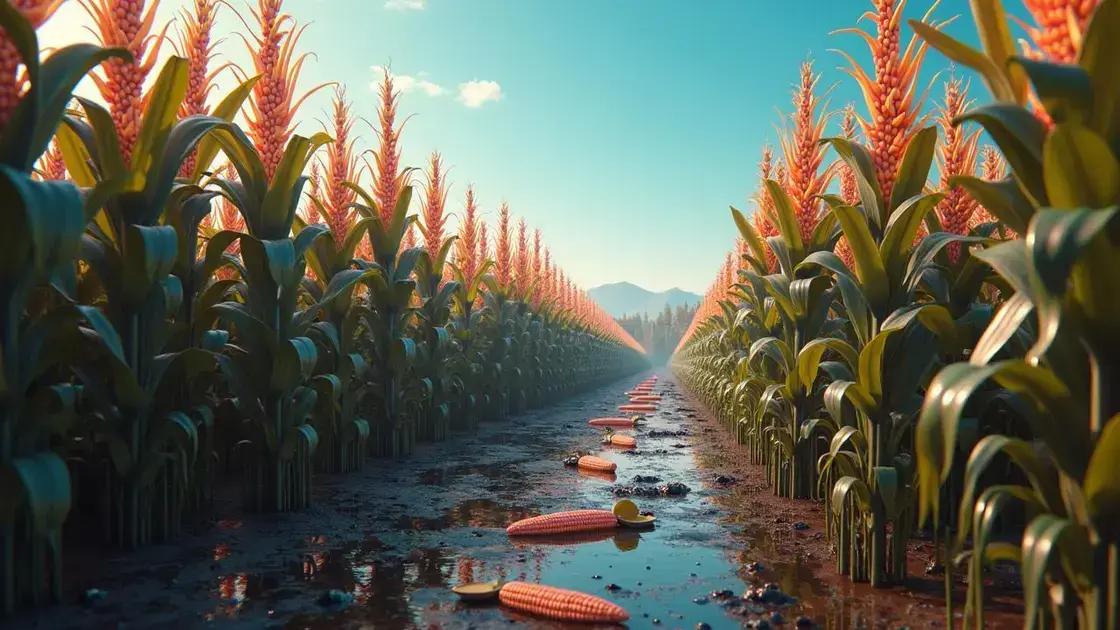How to Take Care of Corn Plant: 5 Essential Tips for Thriving Growth
How to take care of corn plant involves more than just sticking it in a pot and hoping for the best. Understanding the right watering techniques, optimal soil types, and how to identify potential pests can make all the difference. Let’s dive into these essential aspects to help your corn plant flourish.
Table of Contents
ToggleEssential tips for watering your corn plant
How to take care of corn plant involves understanding the importance of proper watering techniques. Watering is crucial for the growth and health of your corn plants, ensuring they receive the right amount of moisture without overwatering.
Understanding corn plant watering needs
Corn plants require consistent moisture in the soil for optimal growth. It’s essential to monitor their watering habits carefully. Here are some key factors to consider when watering your corn plant:
- Soil moisture: Check the top inch of soil; if it feels dry, it’s time to water.
- Frequency: Water your corn plant deeply once a week to encourage deep root growth.
- Climate: Adjust your watering schedule based on weather conditions; hot weather may require more frequent watering.
- Pots vs. ground: Corn plants in pots may need different watering than those planted directly in the ground.
Effective watering techniques
To ensure your corn plant receives adequate moisture without becoming waterlogged, follow these techniques:
- Use a soaker hose or drip irrigation to deliver water slowly and evenly.
- Water early in the morning to reduce evaporation and leaf burn.
- Observe your corn plant for signs of underwatering, such as wilting leaves, or overwatering, indicated by yellowing leaves and root rot.
Common water-related issues
Knowing how to identify watering problems can help maintain your corn plant’s health:
| Issue | Symptoms | Solution |
|---|---|---|
| Underwatering | Wilting leaves | Increase watering frequency and ensure deep watering. |
| Overwatering | Yellowing leaves | Allow soil to dry out, modify watering schedule. |
Additional tips
If you’re interested in improving your gardening skills, consider exploring indoor gardening techniques that focus on proper mulching and soil amendments.
By understanding how to take care of corn plant watering needs, you’ll be well on your way to nurturing healthy and vibrant corn plants.
Best soil and light requirements for corn plants

Best soil and light requirements for corn plants are crucial aspects of ensuring your corn plant thrives. The right conditions can significantly enhance growth and productivity.
Soil types suitable for corn plants
Choosing the right soil is vital for the health of your corn plants. Here’s an overview of the best soil types:
- Loamy soil: Ideal for corn plants as it retains moisture yet drains well.
- Sandy soil: Allows for good drainage but needs more frequent watering.
- Clay soil: Retains moisture but may require amendments to improve drainage.
Essential nutrients for optimal growth
To promote healthy growth, ensure your corn plants receive essential nutrients:
- Nitrogen: Important for foliage growth; consider using nitrogen-rich fertilizers.
- Phosphorus: Supports root development and energy transfer; use bone meal or rock phosphate.
- Potassium: Enhances drought resistance and overall plant vigor; incorporate potassium-rich organic matter.
Light requirements for corn plants
Corn plants thrive in bright, direct sunlight. Here are some specifics:
- Sunlight duration: Aim for at least 6-8 hours of direct sunlight each day.
- Indoor vs. outdoor: If growing indoors, use grow lights to supplement natural light, especially in low-light conditions.
- Temperature factors: Corn plants prefer temperatures between 60°F to 95°F for optimal growth.
Common soil and light-related challenges
Understanding potential issues can help you better care for your corn plants:
| Challenge | Symptoms | Solution |
|---|---|---|
| Poor soil drainage | Soggy soil, yellowing leaves | Amend with organic matter to improve drainage. |
| Insufficient light | Leggy growth, sparse leaves | Increase sunlight exposure or use artificial lighting. |
If you’re keen on enhancing your gardening skills, consider exploring indoor gardening techniques that cover soil amendments and light enhancement for optimal growth.
By ensuring your corn plants have the best soil and light requirements, you set the stage for vigorous and healthy growth.
Common pests and diseases affecting corn plants
Common pests and diseases affecting corn plants can pose real threats to your gardening efforts. Identifying and addressing these issues promptly is key to ensuring healthy growth.
Identifying pests that target corn plants
Several common pests can wreak havoc on your corn plants. Being able to spot them early will help mitigate damage:
- Corn earworms: These pests feed on the corn ears, causing significant damage.
- Aphids: Small insects that suck sap from leaves, leading to yellowing and stunted growth.
- Spider mites: These tiny creatures can cause leaf discoloration and webbing.
- Rootworms: Larvae that damage the roots, affecting water and nutrient absorption.
Common diseases to look out for
In addition to pests, corn plants are susceptible to various diseases, which can hinder growth:
- Common rust: A fungal disease that presents as reddish-brown pustules on leaves.
- Gray leaf spot: Characterized by elongated lesions on leaves, reducing photosynthesis.
- Southern corn leaf blight: Caused by a fungus, it leads to dead patches on leaves.
Effective pest and disease management strategies
Implementing proactive strategies can help protect your corn plants from pests and diseases:
- Regular inspection: Check your plants weekly for signs of pests or diseases.
- Companion planting: Growing certain plants alongside corn can naturally deter pests.
- Organic treatments: Consider neem oil or insecticidal soap for pest control.
Table: Common pests and diseases of corn plants
| Pest/Disease | Symptoms | Management |
|---|---|---|
| Corn earworm | Damage to ears, visible worms | Insecticides, hand-picking |
| Common rust | Red-brown pustules on leaves | Fungicides, resistant varieties |
If you’re interested in improving your gardening skills, consider exploring indoor gardening techniques that teach you about soil preparation and plant health.
By understanding and managing common pests and diseases affecting corn plants, you can foster a thriving garden environment and enjoy a bountiful harvest.
In conclusion
Taking care of corn plants requires attention to various factors, including watering, soil quality, light requirements, and pest management. By following the essential tips outlined in this guide, you’ll be better equipped to nurture your corn plants and ensure they flourish. Don’t forget to monitor them regularly for pests and diseases to keep them healthy.
For additional tips on enhancing your indoor garden, explore methods that can elevate your gardening experience.

